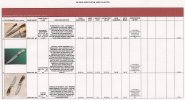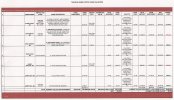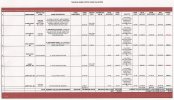At one time I was conducting custom knife collecting seminars at some of the knife shows around the country. Some of you may have even attended one or two.
I found my speaking notes from one such show, and even though possibly outdated to some extent, some info may still apply.
ABS Knife Expo
Custom Knife Collecting Seminar
San Antonio, Texas
Hello, I’m Kevin Jones and I have been asked to do a seminar here today on custom knife collecting. As I certainly don’t have all the answers, I like my seminars to be interactive as I find we all learn more that way. So as we go, please feel free to ask any questions and/or share opinions related to topic.
What I would like to do is to share some opinions and observations as to how I see “the collector” fitting in and helping to progress the custom knife community and possibility help you in building your ultimate collection.
It’s my opinion that we as collectors need to do everything we can to bring in new collectors and keep our existing collectors interested and involved. As a healthy knifemaker to collector ratio keeps supply & demand in check resulting in a stable pricing structure and the continued creative advancement of custom knives.
My best advice in a single word to the newer collector is “Patience”. Be patient in selecting what knives to add to your collection rather than buying on impulse.
Many new collectors initially buy knives on impulse resulting in accumulating a hodge podge of knives before realizing the types of knives and which makers they want represented in their collection. The risk is that these collectors will get frustrated and leave the collectible knife community.
I suggest investing time rather money in getting started in custom knife collecting. Become familiar with makers and the types and styles of knives they make and are known for. Learn about knife construction and what elements, material and design make up a great knife. Learn what to look for in determining good fit/finish and execution of a custom knife.
The more knowledge you have of the particular type knife you are interested in the easier it will be to build your ultimate collection.
So initially, I suggest you focus on your preferred style as it can take years to educate yourself on the many types of custom knives.
Your obvious question is how do I learn about custom knives? There’s lots of ways.
BY going to shows, hammer-ins and even visiting maker’s shops in your area.
Shows: There is no other place where you will find as many knives by so many makers in one place. Makers will invite you to handle their knives talk about them and answer questions.
Hammer-ins: Mainly put on by and for makers, however collectors are always welcomed and hammer-ins are an excellent place to learn about knife construction, fit, finish and materials.
Shop visits: Most makers will gladly schedule a shop visit for an interested collector. Even the most well known makers are very approachable and enjoy interacting and discussing knives with both new and experienced collectors.
BY, monitoring and examining dealer websites.
I know of no other single place a collector can consistently learn more about custom knives without leaving their home.
They contain an abundance of custom knife information from photos and descriptions on all types and styles of knives, to bios on the makers. These sites can give you a good idea as to what’s selling and at what price.
BY, reading and participating on the better custom knife forums where collectors can benefit from the vast and diverse knowledge of experience makers and collectors. There’s good information on knife styles, design and collecting philosophies.
BY, studying the knife publications.
The "Knives Annuals" contain over 1000 photos of all types of customs knives. This is a great place to familiarize yourself with the different maker’s styles and to develop an appreciation for what knives you want to collect.
Subscribe to Blade, Knives Illustrated and Knife World as these publications will help to keep you up to date on knives, makers, trends and basically what’s happening in the knife industry.
BY, joining and participation in knife organizations such the ABS, the Knifemaker’s Guild and knife collecting associations such as the CKCA. These groups have a lot to offer collectors in the form of education, contacts, knife acquisitions, literature and finding other individuals who share your knife interest.
I have tried to give some advice on how to educate yourselves in building your ultimate collection, however at some point most ALL collectors are faced with having to sell knives. This usually happens as a result of the collector’s taste in knives changing, financial circumstance or simply collectors wishing to adjust or upgrade their collections.
I have Ten Guidelines I Follow for Selling Custom Knives, I would like to share them with you.
First, realize you can make money selling custom knifes. If you buy the right knives from the right makers there’s always someone who will pay what they’re worth.
What is the 'right knife'? Usually, a time proven classic design that stands out among the others (for a number of reasons) today and will most likely do so in 2-5 years.
Who is the 'right maker'? Usually, a maker who not only makes well designed and well executed knives, but relentlessly promotes himself and his knives and knows how to run his business thus achieving a favorable and sustainable position in the market.
Second, be continuously making a market for your knives. You can achieve this by getting good photographs taken of your knives and getting them "out there" to be seen by as many potential buyers as possible. You can attract buyers from all over the world by simply having your collection on a good photo site for about $25 a year. Fototime, Photo Bucket, Flicker and others offer this service. You can also take if to the next level of building a good collector website. Photo sites and custom websites will have buyers coming to you. These contacts are great to have if or when you do decide to sell a knife.
Third, send photos to other collectors who have the same knife interest as you, letting them know you are offering knives for sale.
Forth, don't let anyone know you want or need to liquidate your knives. The savvy collector will be finished liquidating before anyone knows they have started.
Fifth, represent your knives accurately. Advertising your knives as something they’re not will not only hurt your chances of selling a knife, but knives in the future as well.
Sixth, don't listen to others telling you that you will always lose money consigning custom knives through dealers.
Find which web dealers have a following for the specific maker's knives you own. For example web dealer X may have a strong overseas market for say Fisk knives. Even after paying consignment fees which generally run from 10% to 30%, you could very well come out ahead over finding buyers yourself. Remember, dealers have access to a much larger pool of buyers than you. In other words, I would much rather share profit with a dealer than lose money selling on my own.
Seventh, sell knives individually not in lots. If you are in a hurry to sell, list them in multiple places. For example, I wouldn’t list 6 knives for sale on the same day on the same forum exchange. This indicates a “Fire Sale” and buyers will expect discounts.
Eighth, many forum “for sale” or “exchange” areas are best suited for buyer's rather than sellers. You may be successful if your knives are from the right makers and you acquired them at the right prices.
Ninth, don’t appear desperate. Give your knives a chance to sell at your initial price. Frequently dropping your price only makes potential buyers hesitate in anticipation of additional reductions.
Tenth, use eBay only as a last resort unless you are prepared to discount your knives.
Collection Documentation:
In my opinion, documenting and managing your collection is very important for investment reasons, insurance purposes in case of fire or theft, and estate purposes in the event something happens to you and your family needs to liquidate your collection.
I have created a collection database to store and display knife information such as:
Photos, maker information, knife specifications and materials, date & from whom purchased, price paid, current value, price and to whom sold, ROI for individual knives, total collection ROI to date, total collection cost, total collection value, perspective buyer information and recording provenance.
This simple spreadsheet can prove to be a very valuable tool for managing your custom knife collection. I suggest regularly updating this information and burning a copy to CD and storing with your other important documents.
I would also consider naming a friend or associate who is trustworthy and knowledgeable in custom knives to assist your estate in the disposition of your collection after death.



